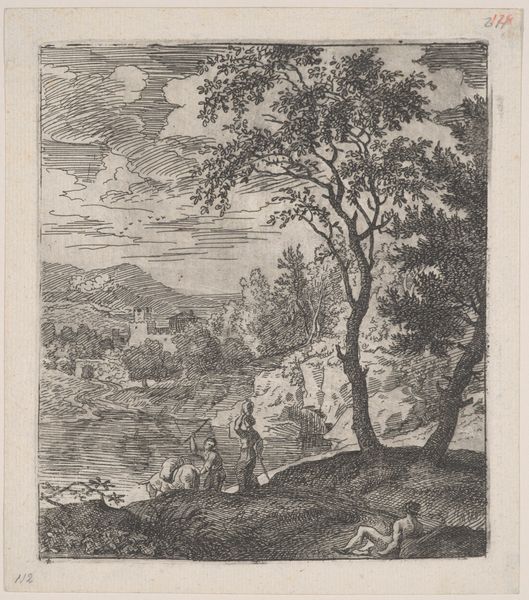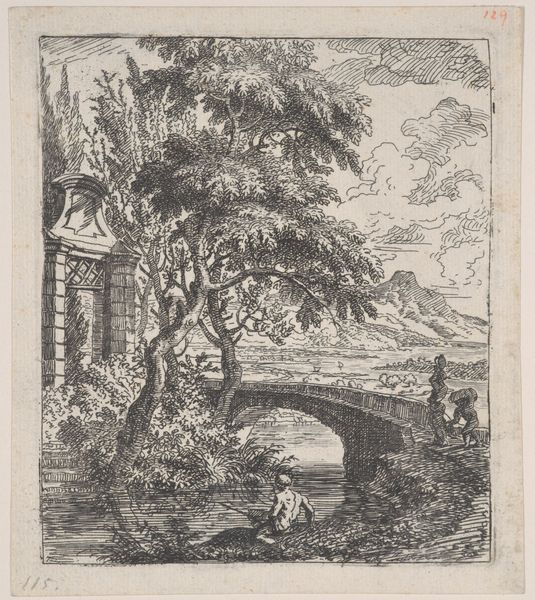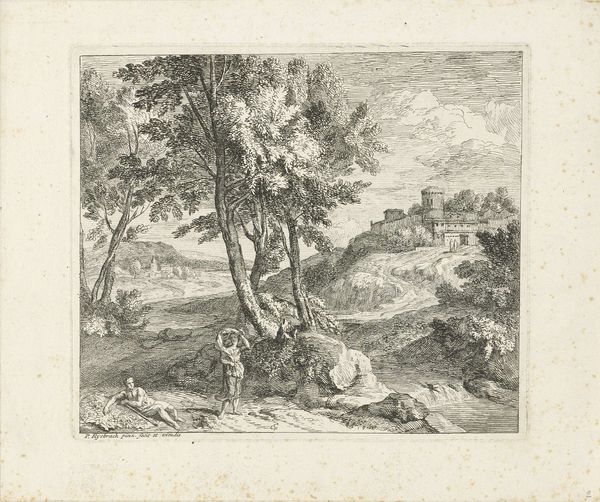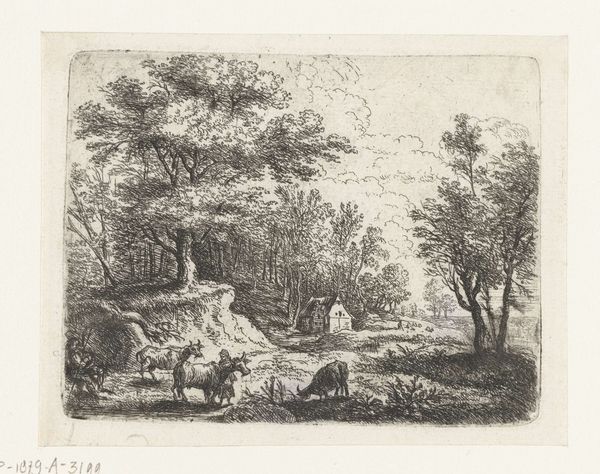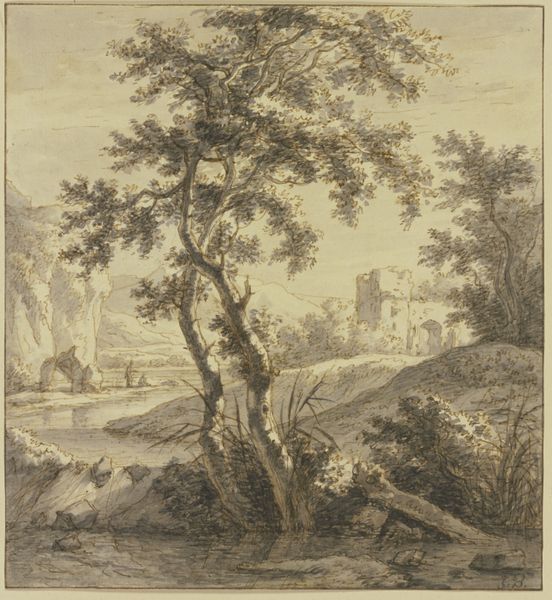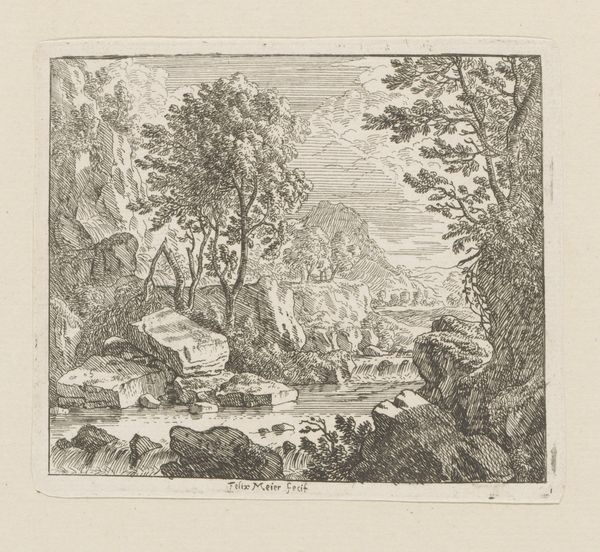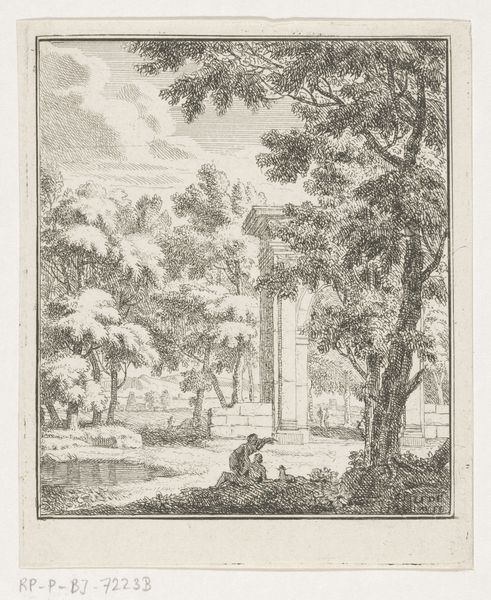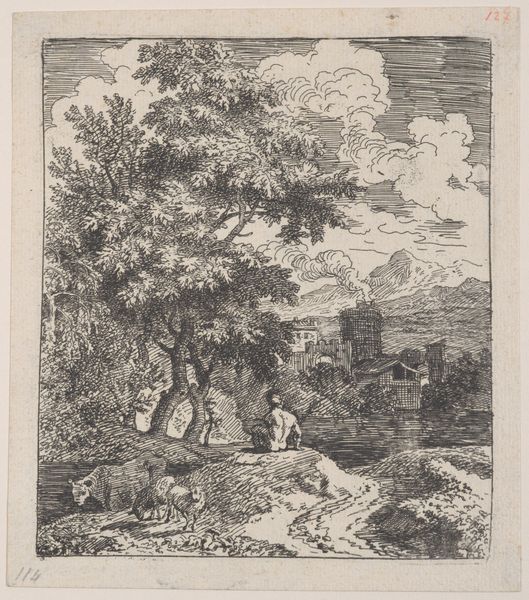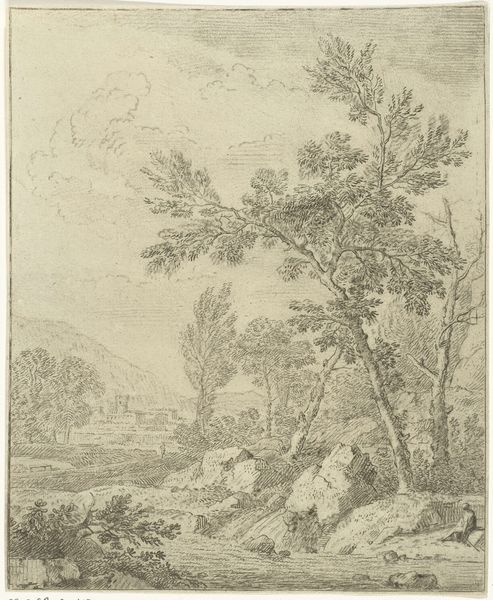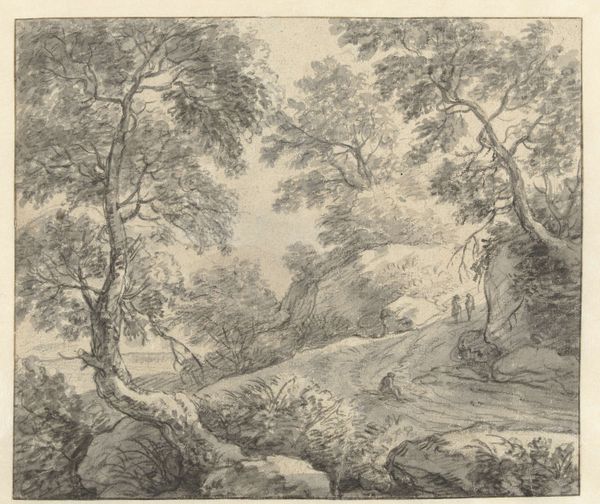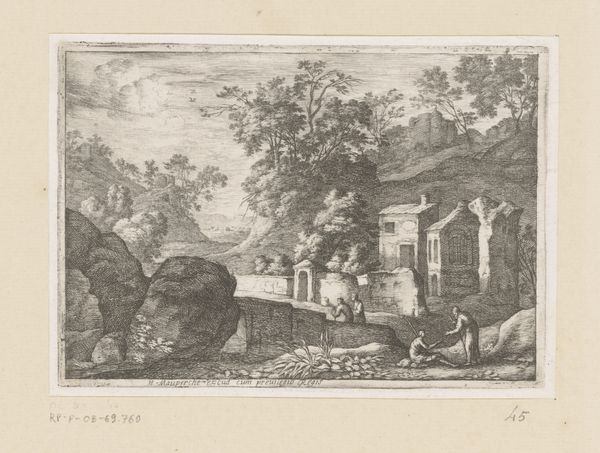
Plate 6: the stone bridge: a shepherd with two cows crossing the bridge, three male figures resting on the riverbank in the foreground, from 'Landscapes in the manner of Gaspar Dughet' 1695 - 1730
0:00
0:00
drawing, print, etching
#
drawing
#
baroque
# print
#
etching
#
landscape
#
etching
Dimensions: Plate: 6 7/8 × 6 in. (17.5 × 15.3 cm) Sheet: 7 5/8 × 6 11/16 in. (19.4 × 17 cm)
Copyright: Public Domain
Curator: Let’s explore this etching from sometime between 1695 and 1730, "Plate 6: the stone bridge: a shepherd with two cows crossing the bridge, three male figures resting on the riverbank in the foreground, from 'Landscapes in the manner of Gaspar Dughet.'" It's currently residing here at the Metropolitan Museum. Editor: Immediately, I am struck by a sense of calm. The delicate lines create a feeling of serene pastoral life. The way the artist rendered light reflecting off the water is quite masterful, given the medium. Curator: Indeed, and in analyzing its creation we need to recognize the history of pastoral scenes themselves. In the era that produced this piece, there were evolving relationships between labor and leisure and land. Think about the landed gentry's view of this "simpler life" as removed from realities for many. Editor: Yes, but in terms of iconography, bridges are frequently associated with transitions and passages, or as connection, don’t you agree? The way the shepherd calmly leads his cows speaks volumes. Curator: A fair point, however that sense of calm could very well have masked socio-economic tensions during the Baroque period, masking class division between landscape romanticization for privileged people and those of agricultural communities themselves. Editor: I would argue that the way the light defines the natural elements invites deeper thinking on the interplay of humanity and its world, almost as in classical ideals of "Arcadia." Look too how it gives us a window to timeless myths with simple characters, and not just societal inequality. Curator: The symbolism could well be intentional on the artist's part. Whether a critique or reinforcement of the existing social order remains. Perhaps, the enduring nature of landscapes reminds of certain inescapable social disparities even within the illusion of utopia? Editor: And so the echoes of nature are heard beyond their intended meaning and find greater understanding and deeper relevance, now that they were spoken on both our parts. Curator: It’s through those contextualization as well as analyses of material symbolisms, that artworks open to an ever-shifting conversation.
Comments
No comments
Be the first to comment and join the conversation on the ultimate creative platform.
